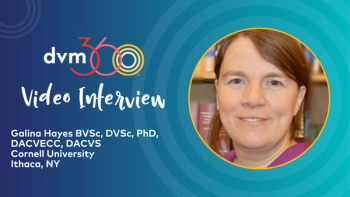
Just Ask the Expert: Tail amputation in a cat
Do I need to amputate the tail, and, if so, where do I amputate it?
Dr. Swaim welcomes questions from veterinarians and technicians on wound management and reconstructive surgery in small animals.
To ask your question, e-mail:
With the subject line: Wound management and reconstruction
Q: I am a general practitioner in a rural area in Southern Europe. An approximately 1.5-year-old intact male cat was presented to me with a foul-smelling bandage on its tail. The cat had difficulty walking and was lethargic. The owners said that a week earlier the cat had appeared with a maggot-infested wound on its tail. An attempt had been made to clean the wound and remove the maggots before the cat was presented to my clinic. Afterward, a bandage had been applied; the owner did not see the cat again until the day before it was brought to the clinic.
I sedated the cat, washed the wound, cut off the dried-up part of its tail, and applied a honey poultice. After keeping the cat for 24 hours, I know it can defecate and urinate. It is still weak in its hindlimbs. I've given it subcutaneous fluids as well as Baytril and Clavamox and an anthelmintic. The cat's FeLV/FIV status is negative. I am attaching a picture of what is left of the tail after the first honey poultice was removed.
My question is: Do I need to amputate the tail, and, if so, where do I amputate it? Very little viable skin is left around the tail base. Should I amputate and wait for second-intention healing? Should I try a scrotal mesh graft? When can I send the cat home? This is a difficult situation since I never keep animals overnight, but I feel that this cat is not ready to gohome. There is a severe restriction on the money the owners want to spend, and I would like to do the best job I can for this patient.
A: The distal end of the remaining tail appears to have a healthy bed of granulation tissue. This is one of the prerequisites for doing a skin graft (e.g. a mesh graft). Mesh grafts do heal well on cats, However, the aftercare would be significant with the bandaging that would be necessary. In light of the financial constraints and the fact you want to get the cat home quickly, I would suggest a more direct approach.
One option is tail amputation in such a way that skin that is present can be used for closure. After all necrotic tissue has been removed, amputate the tail right at the juncture of full-thickness skin with the new epithelium that is starting to grow over the granulation tissue. Amputate in such a way as to maintain the skin, but remove underlying coccygeal muscles and vertebrae such that there is some skin protruding beyond the amputation stump. This will require undermining around the stump and cutting the coccygeal muscles and vertebrae up under the undermined skin. The loose skin can then be fashioned to provide closure over the stump.
A postoperative complication with such an amputation is that the wound may disrupt as the animal sits, traumatizing the end of the stump. Also, if the cat is not restrained from licking or chewing the area (e.g. by using an Elizabethan collar), the wound may disrupt. To help deter licking, place simple interrupted sutures in the area using 4-0 or 5-0 stainless steel cut to leave short sharp tags on the sutures.
A second option is to amputate at the sacral-coccygeal level, giving the cat a Manx appearance of no tail. At this level there would be sufficient skin on the body for easy closure, and the situation of stump trauma would be avoided.
Amputation at the sacral-coccygeal level could potentially expose the distal-most end of the spinal canal. Thus, good aseptic technique would be necessary to avoid infection of the area.
I hope this gives you some considerations in managing this case.
Steven F. Swaim, DVM, MS
Professor emeritus
Scott-Ritchey Research Center
Department of Clinical Sciences
College of Veterinary Medicine
Auburn University
Auburn University, AL 36849
The intent of Just Ask the Expert is to address non-urgent medical questions and to share this information through the Web site with other practitioners. The recommendations are for informational purposes only. It is each clinician's responsibility to carefully weigh these recommendations and determine the right course of action for each patient. Please verify any drug dosages discussed. Questions may be edited for style and length.
Newsletter
From exam room tips to practice management insights, get trusted veterinary news delivered straight to your inbox—subscribe to dvm360.




